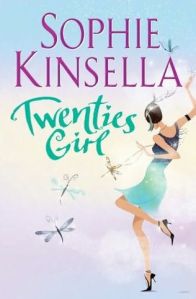I picked up this book for obvious reasons: the title and the drawing of a Flapper on the front cover. The back cover blurb also sounded interesting: “If you suddenly had a friend that only you could see or hear, what would you do?”
Lara’s life is a mess when she attends the funeral of the great aunt she never knew. At the funeral she is accosted by the ghost of her great aunt Sadie, now back in the form of her heyday self: a 1920s Flapper. Sadie insists Lara stop the funeral and do everything possible to prevent her cremation and find her missing necklace.
I’ll admit the first 5-6 chapters did not grab me. I quite happily put the book down one night and didn’t pick it up again for at least a week. Why? Because neither Lara or Sadie were particularly nice people. Lara was a wimpy loser, stalking an ex boyfriend who clearly didn’t want her. Sadie was arrogant, ungrateful and self-absorbed.
Fortunately for me, I’m too penny pinching to spend R125 (nearly $10) on a book and not at least read it half way, so I persevered. By the middle of the book, the story had grabbed me, and by the end my face was wet with tears. The love story is tragic. After all, for a ghost there’s no going back to undo the past, so the ending is bitter-sweet, but Lara gets her Happy Ever After and (best of all for me) she finds her strength and takes control of her life. She becomes the epitome of what the Flappers represent for me, even more so than Sadie.
 Because for me these modern women of the 20s weren’t all about clothes, make-up and dancing. Having fun might have been pretty high on the agenda for them, but I like to believe they were all about independence and freedom of expression.
Because for me these modern women of the 20s weren’t all about clothes, make-up and dancing. Having fun might have been pretty high on the agenda for them, but I like to believe they were all about independence and freedom of expression.
Sophie Kinsella’s book is worth a read. You might just need to persevere if, like me, you find the first few chapters a little off-putting. And if you’ve read the book, I’d love to hear your views.
 Three and a half years after the release of my first novella, and reviews are still coming in. Best of all, the reviews only seem to be getting better! Today Google Alerts alerted me to a new review for Let’s Misbehave from Maria at Romantic Historical Reviews. Thanks Maria, and I’m so glad you enjoyed it!
Three and a half years after the release of my first novella, and reviews are still coming in. Best of all, the reviews only seem to be getting better! Today Google Alerts alerted me to a new review for Let’s Misbehave from Maria at Romantic Historical Reviews. Thanks Maria, and I’m so glad you enjoyed it!







